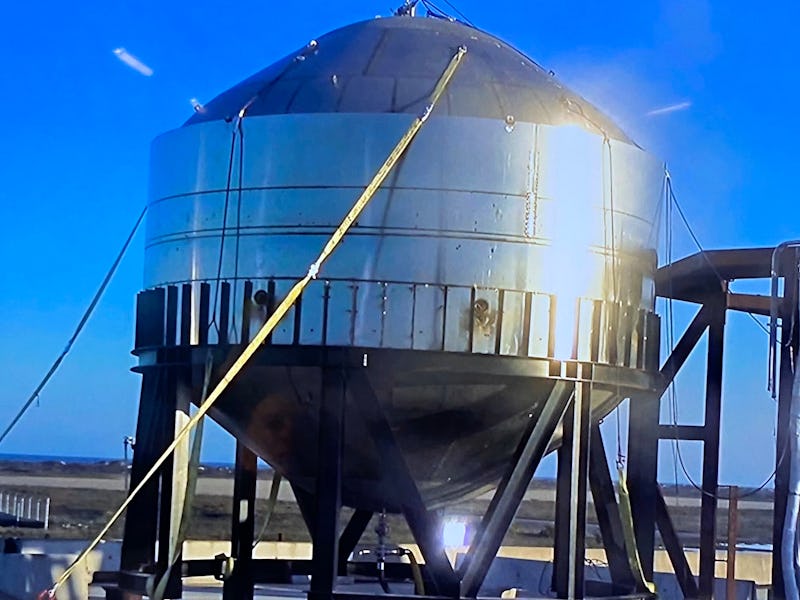SpaceX Starship: why this Elon Musk photo is causing such a buzz
A seemingly simple image of a shiny tower is a big step toward human spaceflight.

On Monday evening, Elon Musk lit up the spaceflight community. The SpaceX CEO shared an image of what looked a bit like a water tower, a shiny steel construction backed by a clear blue sky.
"Starship 9m test tank made 7.5 bar at room temp! Small leak at a weld doubler. Will be repaired & retested at cryo," Musk explained to his 30.9 million Twitter followers.
See also: The FCC may face legal repercussions for approving SpaceX’s Starlink constellation
The key takeaway is that this is a small step to perfecting the Starship, the planned vessel designed to send humans to Mars and beyond. Currently under construction at the Boca Chica facility in Texas, the Starship was first unveiled as a full-size "Mk.1" prototype in September 2019. The team is now developing "SN1," the first in a series of ships with iterative design improvements that will continue changing until around "SN20."
Monday's breakthrough was in designing a test tank that could withstand high levels of pressure. "Bar" is a measure of pressure, and one bar is around the pressure of the atmosphere at sea level (more precisely, it's 1.01325 bar). That means Musk's tank was able to withstand a pressure around 7.5 times higher than that at sea level.
Is that good? It's definitely an improvement, and it's close to the figure needed to safely fly humans into space.
Musk outlined the team's goals back on January 10. Essentially, six bar is enough for an orbital flight. For an orbital flight with humans, the team is aiming for an added safety factor that raises the figure by a factor of 1.4. That means the team needs to reach pressures of around 8.5 bar.
SpaceX has been hosting these pressure tests with improving results. Musk said goodbye to the Mk.1 prototype in spectacular fashion on November 20, when the tank seemed to blow off during a pressure test. Musk justified the explosion in part by noting that the final design would be "quite different" anyway.
SpaceX hosted another pressure test on January 10. This one, Musk revealed after, made it to 7.1 bar.
Fans noted in the aftermath of the latest pressure test that the steel used in the Starship is actually near its weakest state around room temperatures. As Musk noted, the team now plans to test the tank at "cryo" temperatures, defined as a range between minus 238 degrees Fahrenheit all the way down to absolute zero.
This shouldn't be a problem. Musk noted that the parent material strength should double in these freezing conditions. The real question mark will be the strength of the welding, where the steel rings join together.
These steel rings are a key aspect of where recent Starships have improved. On the earlier Mk.1 prototype, Spacex can be seen using individual rectangular tiles. At the September 2019 event, Musk explained how the team's goal was to take steel coils directly from the mill and shape them to form the necessary nine-meter diameter.
So when will Starship fly? At the September 2019 event, Musk suggested that an orbital flight would take place within six months, a figure accurate to within a few months. At the end of December, Musk reiterated that a flight would be "hopefully" two to three months away. That would place the first full-size flight of Starship somewhere around March.
The pressure – no pun intended – is on.